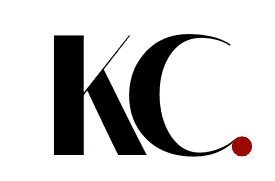
The Five Moats That Matter When Intelligence Becomes Free
This blog identifies five key competitive advantages that remain defensible as AI makes intelligence increasingly accessible and affordable to all businesses.
Most conversations I have about AI focus on tactical questions—process automation, which models to use, how to build chatbots, whether you need a Chief AI Officer. These tactical considerations are important, but it's crucial to first start with the strategic foundation: What parts of your business remain defensible when everyone has access to similar AI tools?
"Intelligence becoming free" means that AI is making cognitive work—analysis, writing, research, problem-solving—so cheap and accessible that it's essentially cost-free, fundamentally changing what customers will pay for.
The test is simple: if intelligence became free tomorrow, would customers still pay you the same amount? If not, you're selling intelligence, not value. And selling intelligence is about to become a very bad business.
The companies that survive will pick one moat and become obsessed with deepening it. They'll cannibalize their existing revenue to build something sustainable. The ones that try to defend everything will lose everything.
This isn't theoretical. It's happening now. Every month, some "unassailable" competitive advantage gets automated away. The question isn't whether your industry will be transformed—it's whether your company will do the transforming or get transformed.
The Five Moats
Brand. LVMH will still matter long after AI can design luxury goods, because people buy Louis Vuitton for identity and status, not just functionality. ChatGPT seems relatively immune to disruption because of behavioral adaptation. Taylor Swift's billion-dollar tour succeeded despite streaming making music nearly free because fans crave authentic emotional connection.
Data. What seems to matter is what you might call "offline tokens"—proprietary information that large language models haven't seen. A manufacturing company's decades of equipment failure data. A hospital's longitudinal patient outcomes. This exclusive information enables custom AI applications that generic models can't match.
Network effects. Craigslist's bare-bones interface has survived waves of sleeker competitors because buyers go where sellers are. LinkedIn's professional networking moat strengthened as AI made the platform more valuable to each new member.
Regulatory. TransDigm Group has outperformed Apple and Amazon by acquiring companies that make FAA-certified aircraft parts. Once a component is certified and designed into a plane, switching suppliers becomes nearly impossible.
Scale. Walmart doesn't have the best shopping experience, but its purchasing power and logistics network create cost advantages that are hard to replicate. AWS dominates not just through innovation, but through infrastructure investments that enable better economics.
Building What Can't Be Copied
Choosing your moat is the easy part. The hard work begins when you try to actually build it.
Consider Netflix's data moat. Their competitive advantage isn't just having viewing data—it's the machinery they've built around it. Custom ML pipelines that process billions of viewing events in real-time. A recommendation engine that gets retrained continuously based on micro-interactions most companies would never think to capture. Content algorithms that can predict hit shows before they're even filmed. Competitors can see Netflix's strategy, but they can't replicate the decade of capability building that makes it work.
This is the pattern across every durable moat. TransDigm doesn't just acquire FAA-certified parts companies—they've built the most sophisticated aerospace acquisition playbook in the industry, with specialized integration teams and regulatory expertise that takes years to develop. Walmart doesn't just have scale—they've invested decades building supply chain software, vendor relationships, and logistics capabilities that Amazon still struggles to match in physical retail.
The gap between strategy and capability is where most companies fail. They identify their moat, announce their focus, then discover they lack the organizational muscle to defend it.
The timeline makes this especially challenging. Building deep capabilities takes time, while AI capabilities advance rapidly. Your competitors aren't just copying your current strategy—they're using AI to compress their learning curves and accelerate their own capability building.
The question worth asking: What specific capability are we building that our competitors can't replicate by simply copying our strategy? When intelligence is free, these capabilities—not the intelligence itself—are what customers will pay for. The companies that can answer this clearly are the ones building something sustainable.

